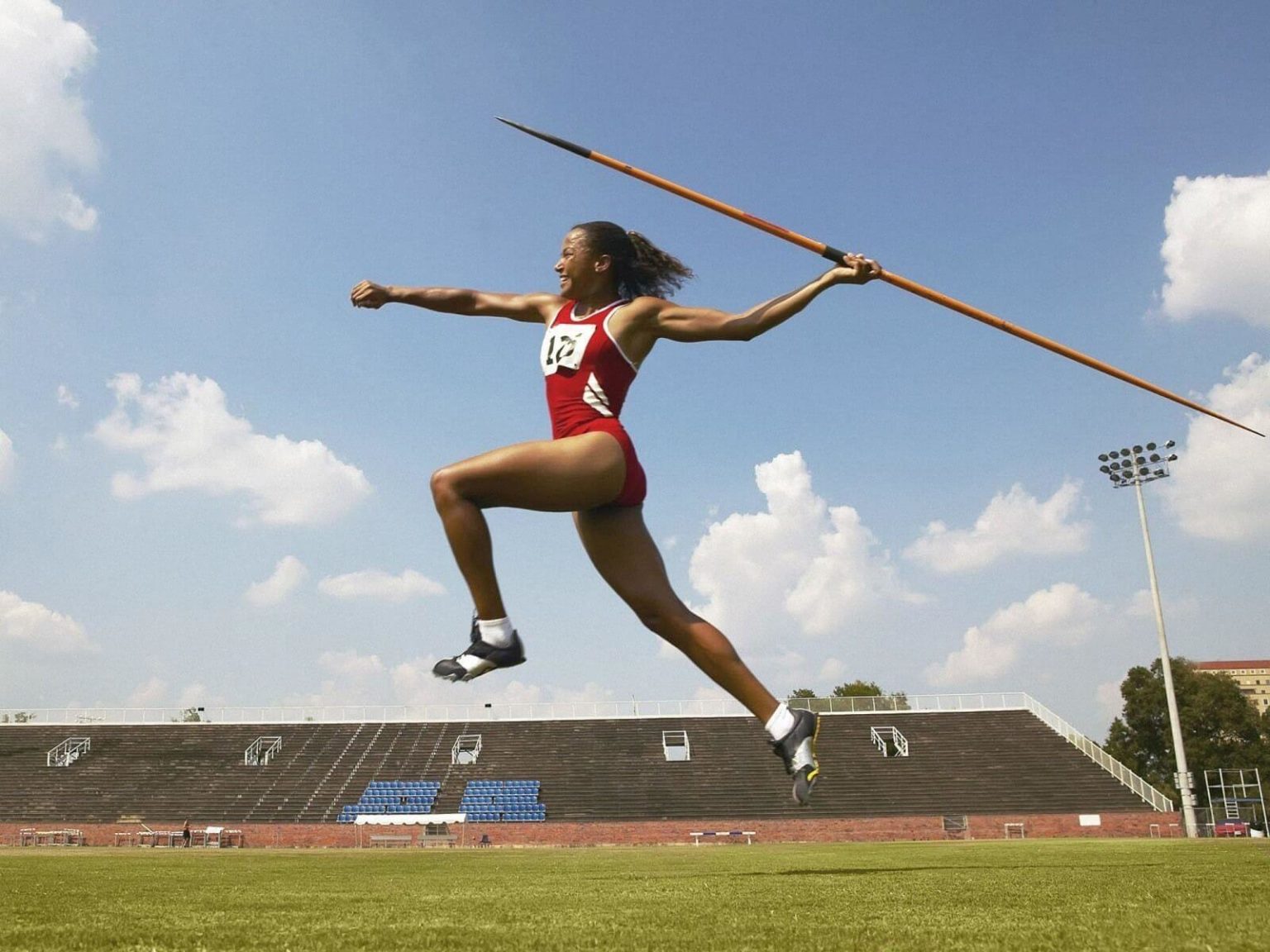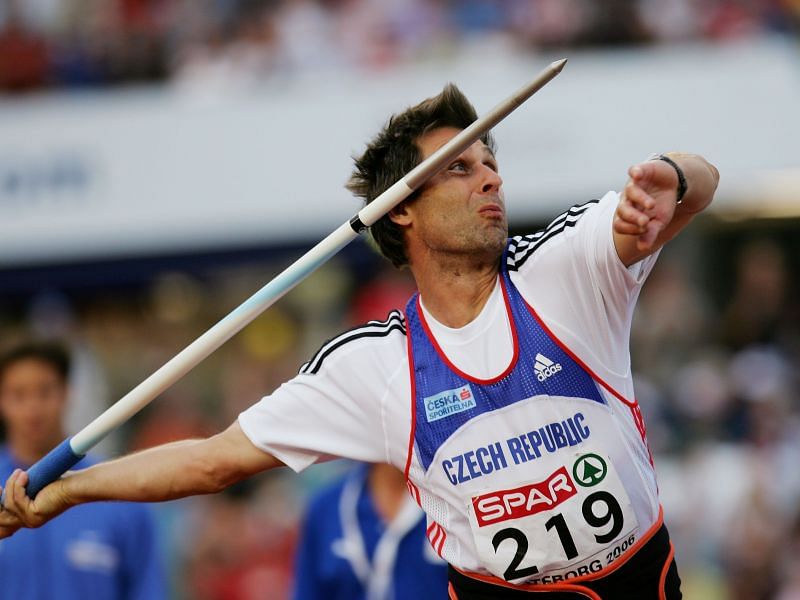Javelin Throw History and Evolution

The javelin throw has been a staple event in the Olympic Games since the very first edition in 1896. Over the years, the event has undergone significant transformations, both in terms of technique and the design of the javelin itself. These changes have led to a steady increase in the distances achieved by athletes, pushing the boundaries of human performance.
The evolution of the javelin throw can be traced through the rule changes and innovations that have shaped the event.
Rule Changes and Their Impact
Rule changes have played a crucial role in the evolution of the javelin throw. These modifications have aimed to enhance safety, ensure fairness, and promote a more efficient and dynamic throwing style.
- Change in Javelin Design (1986): Prior to 1986, javelins were designed with a center of gravity that favored a “flat” throwing style, where the javelin was released with a slight upward angle. This technique often resulted in the javelin landing dangerously close to spectators. To address this safety concern, the International Association of Athletics Federations (IAAF) introduced a new javelin design with a shifted center of gravity. This change forced athletes to adopt a more “overhand” throwing style, resulting in a steeper trajectory and a significantly longer throw.
- Foot Fault Rule (1986): The introduction of the foot fault rule in 1986 aimed to prevent athletes from gaining an unfair advantage by stepping over the foul line during their throw. This rule added another layer of complexity to the javelin throw, requiring athletes to maintain perfect balance and control while executing their throw.
- Changes in the Throwing Technique: The shift in javelin design and the introduction of the foot fault rule forced athletes to adapt their throwing techniques. The “overhand” style, which became more prevalent after the 1986 rule changes, emphasizes a powerful, fluid motion that utilizes the entire body to generate maximum force.
Innovations in Javelin Design, Athletics at the summer olympics – javelin throw schedule and results
Innovations in javelin design have significantly impacted the performance of athletes in the javelin throw. These advancements have focused on improving the aerodynamics and balance of the javelin, leading to greater distances and consistency.
- Aerodynamic Improvements: Modern javelins are designed with a streamlined shape and a smooth, polished surface to minimize air resistance. This aerodynamic efficiency allows the javelin to travel further through the air, increasing the distance of the throw.
- Material Innovations: The use of advanced materials, such as carbon fiber and fiberglass, has allowed for the creation of lighter and stronger javelins. This reduced weight and increased strength allow athletes to generate more speed and velocity during their throw.
- Balance and Stability: The center of gravity of modern javelins is carefully calibrated to ensure optimal balance and stability during flight. This balance allows the javelin to maintain a consistent trajectory, reducing the chances of it veering off course.
Javelin Throw Techniques and Strategies

The javelin throw, a test of strength, technique, and precision, demands a mastery of specific techniques to achieve maximum distance. Athletes employ various strategies, each with its own advantages and disadvantages, to optimize their throws. Understanding these techniques and the factors influencing performance is crucial for success in this demanding sport.
Javelin Throw Techniques
The javelin throw involves a complex sequence of movements that culminate in a powerful release. Two primary techniques are widely employed: the “overhand” and the “underhand” throws.
- Overhand Throw: This technique, considered the standard in modern javelin throwing, involves a powerful overhand motion that propels the javelin forward. The athlete runs towards the throwing line, holding the javelin with a grip that allows for a strong and controlled release. The overhand technique allows for a greater release velocity, contributing to longer throws.
- Underhand Throw: The underhand throw, while less common in modern competition, was the dominant technique in the past. The athlete holds the javelin with a grip that facilitates a powerful underhand motion. While this technique may be less efficient in terms of distance, it can be more controlled and accurate.
Step-by-Step Breakdown of a Successful Javelin Throw
A successful javelin throw is the result of a meticulously planned and executed sequence of movements. Here is a step-by-step breakdown of the key phases:
- Approach: The athlete begins the throw with a controlled run-up, accelerating towards the throwing line. The approach should be fluid and consistent, allowing the athlete to build momentum and position themselves for a powerful release.
- Plant: As the athlete reaches the throwing line, they plant their foot, creating a pivot point for the throw. The plant should be firm and stable, providing a solid base for the subsequent movements.
- Javelin Grip: The athlete grips the javelin firmly with a grip that allows for a strong and controlled release. The grip should be secure but not too tight, allowing for flexibility and power.
- Backswing: The athlete brings the javelin back in a smooth and controlled motion, building tension in the muscles. The backswing should be fluid and powerful, generating momentum for the forward swing.
- Forward Swing: The athlete swings the javelin forward, accelerating the javelin towards the release point. The forward swing should be powerful and explosive, maximizing the javelin’s velocity.
- Release: The athlete releases the javelin with a strong and controlled motion, ensuring that the javelin is released at the optimal angle and velocity. The release should be smooth and precise, maximizing the javelin’s trajectory.
- Follow-Through: After the release, the athlete continues the throwing motion, maintaining balance and control. The follow-through helps to ensure a smooth and consistent throw, reducing the risk of injury.
Factors Influencing Javelin Throw Performance
Achieving optimal javelin throw performance requires a combination of physical attributes, technical proficiency, and mental focus. Key factors influencing performance include:
- Speed: Speed is crucial for generating momentum and propelling the javelin forward. A faster approach allows the athlete to build up greater velocity, resulting in longer throws.
- Balance: Maintaining balance throughout the throw is essential for achieving a smooth and controlled release. A loss of balance can lead to an inaccurate throw or even injury.
- Timing: Proper timing is critical for coordinating the various phases of the throw. The athlete must time their movements precisely to ensure that the javelin is released at the optimal moment for maximum distance.
Notable Javelin Throwers and Records: Athletics At The Summer Olympics – Javelin Throw Schedule And Results

The javelin throw has a rich history, filled with exceptional athletes who have pushed the boundaries of human strength and skill. From legendary figures to contemporary stars, these throwers have left an indelible mark on the sport.
Top 10 Javelin Throwers of All Time
This list showcases the top 10 javelin throwers of all time, based on their best throws, reflecting their exceptional skill and dedication to the sport.
| Rank | Athlete | Nationality | Best Throw | Olympic Achievements |
|---|---|---|---|---|
| 1 | Jan Železný | Czech Republic | 98.48 m | Gold – 1992, 1996, 2000 |
| 2 | Andreas Thorkildsen | Norway | 91.59 m | Gold – 2004, 2008 |
| 3 | Aki Parviainen | Finland | 91.31 m | Silver – 1996 |
| 4 | Seppo Räty | Finland | 91.06 m | Silver – 1988, Bronze – 1992 |
| 5 | Steve Backley | Great Britain | 91.02 m | Gold – 1992, Bronze – 1996 |
| 6 | Tero Pitkämäki | Finland | 91.00 m | Silver – 2007, Bronze – 2012 |
| 7 | Raymond Hecht | Germany | 90.93 m | Bronze – 1996 |
| 8 | Roman Avramenko | Ukraine | 90.32 m | Bronze – 2000 |
| 9 | Boris Henry | Germany | 90.16 m | Bronze – 1992 |
| 10 | Kimmo Kinnunen | Finland | 89.98 m | Bronze – 1996 |
Olympic Javelin Throw Records
These records highlight the remarkable achievements of athletes in the Olympic javelin throw.
| Year | Athlete | Distance | Gender |
|---|---|---|---|
| 2008 | Andreas Thorkildsen | 90.57 m | Men |
| 2008 | Barbora Špotáková | 71.42 m | Women |
Javelin Throw at the Tokyo 2020 Olympics
The Tokyo 2020 Olympics witnessed captivating performances in the javelin throw, showcasing the skill and athleticism of the world’s best throwers.
- Men’s Javelin Throw: Neeraj Chopra of India secured the gold medal with a throw of 87.58 m, becoming the first Indian athlete to win an Olympic gold medal in track and field. Germany’s Johannes Vetter, who entered the competition as the favorite, finished in second place with a throw of 85.32 m. Jakub Vadlejch of the Czech Republic took home the bronze medal with a throw of 85.44 m.
- Women’s Javelin Throw: The women’s competition saw a thrilling finish, with Maria Andrejczyk of Poland winning the silver medal with a throw of 64.61 m. The gold medal went to Liu Shiying of China with a throw of 66.34 m, while Kelsey-Lee Barber of Australia secured the bronze with a throw of 64.56 m.
The athletics at the Summer Olympics – javelin throw schedule and results are eagerly awaited by fans worldwide. The javelin throw is a test of strength, precision, and technique, and the men’s javelin event has a long and storied history.
For those wanting to learn more about the evolution of this thrilling event, exploring the history of the men’s javelin can provide a fascinating insight into the sport’s development. Back at the Olympics, the javelin throw schedule and results will be a highlight of the athletics program, showcasing the best throwers in the world.
The Summer Olympics is a spectacle of athletic prowess, with events like the javelin throw captivating audiences with its blend of power and precision. While the world watches these athletes compete for gold, some might be more interested in the personal lives of these stars, like the relationship between singer-songwriter Dominic Fike and model Diana Silvers, which has been making headlines recently.
But back to the games, the javelin throw schedule and results are sure to provide thrilling moments as athletes strive for victory on the world stage.
